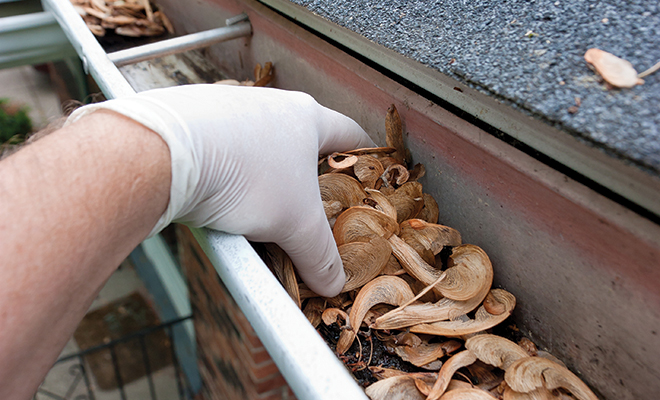
Get Ready for Winter: Prepare your Home, Reduce Energy Costs
As fall foliage gives way to the crisp chill of winter, it’s time to shift focus from outdoor adventures to cozy indoor living. It’s also time to prepare your home for seasonal changes ahead.
Winterizing your home inside and out helps protect it from freezing temperatures, rain, ice, snow and wind. It can also help lower the cost of heating your home during the months when energy consumption typically peaks. Here are eight tips to help you get your home winter-ready, avoid weather-related damage and keep energy costs in check.
Clean and Repair Gutters
Clogged gutters lead to rain runoff that can destroy landscaping and damage a home’s foundation and interior. Leaves and twigs are major culprits, so it’s important to clean your gutters at the end of autumn. Hire a professional for the job if your home has more than one story or you’re concerned about safety. Installing gutter guards can prevent clogged gutters and make maintenance easier.
Seal the Leaks
During winter, drafty windows and doors can make your home an uncomfortable space. Check the seals around windows, doors and any other openings that might let cold air in or warm air out. Weatherstripping and caulking are cost-effective methods to prevent unwanted drafts. You may also want to cover windows on the inside with clear plastic film to reduce drafts. Besides improving your home’s energy efficiency, sealing the leaks can enhance your overall indoor air quality by keeping out dust and pollutants.
Inspect your Roof
Winter weather is hard on a roof, especially in snowy or stormy climates. Visually check your roof for damage to shingles, flashing and vents, then look for signs of leaks inside your home, including mold or mildew in the attic. If you find problems, hire a roofing professional for repairs. Overhanging tree limbs are a hazard and should be trimmed to at least three feet from your roof before the onset of bad weather. You also may need a roof cleaner during the winter to remove snow, ice or leaf buildup.
Insulate your Attic
A poorly insulated attic makes your heating system work harder. It can also contribute to roof issues such as ice dams. If your insulation level is below the attic floor joists, you may need to add more. There are several types of insulation available, so unless you’re a DIY expert, hire a contractor to install the best type for your home and climate. In some parts of the country, you can offset the cost with a federal tax credit or utility rebate.
Protect your Home’s Pipes
Frozen pipes are a major headache for homeowners, especially if they burst. Locate your home’s main water shutoff valve in case you need it during an emergency. If you live where the temperature can drop below freezing for several days, consider insulation for your pipes. For added protection, there are sensors you can install to detect pipe temperature and water leaks. Drain outdoor sprinkler systems and garden hoses; disconnect hoses from spigots and store them indoors.
Tune-Up Your Heating System
Your heating system is about to become your best friend during the cold months. Ensure it’s up to the task by scheduling a professional tune-up. Regular maintenance can improve its efficiency, reduce energy consumption and prolong its lifespan. Don’t forget to replace air filters regularly to ensure proper airflow and efficient operation. A well-maintained heating system will not only keep your home warm but also save money on your energy bills.
Install a Smart Thermostat
Smart thermostats connect to Wi-Fi and use a combination of AI and user control to reduce energy usage. According to Consumer Reports, smart thermostats often pay for themselves through savings on heating and cooling bills. Basic models let you control the thermostat remotely via a smart phone or tablet, or by using voice commands. High-end models learn your preferences over time and adjust your home’s temperature to optimize energy usage while keeping you comfortable.
Let the Sunshine In
If you live in an area with sunshine during the day, make the most of the sun’s natural warmth by keeping your curtains or blinds open during daylight hours and closing them at night to keep the heat. This simple practice can significantly reduce heating needs and lead to noticeable energy savings.
As winter draws near, taking steps to prepare your home for the cold is not only a matter of comfort, it also makes financial sense. By sealing leaks, optimizing insulation, maintaining your heating system, embracing smart technology and making the most of natural sunlight, you can reduce energy costs while keeping your home warm and inviting. These proactive measures not only benefit your wallet but also contribute to a more sustainable lifestyle.
Sources: Sources: angi.com, bankrate.com, consumerreports.org, energystar.gov and popularmechanics.com.







